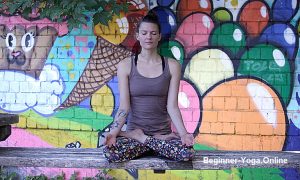No time to read this? Click here to receive this post as a PDF

It’s time to take a time-out. This is a time to learn to unplug from the constant tug of cellphones and Internet. In these times, the barrage of advertising, noise, and stimuli we encounter daily are pulling us in every direction at once.
We feel tired. We feel stressed. We feel broken. Practicing mindfulness can help us generate calm, spaciousness, and happiness in our lives. Let’s start with the basics.
What is mindfulness?
Mindfulness is remembering—remembering that we have a body, that we are breathing, that we are alive. Much of the time, we are in a kind of state of sleepwalking. We are going through the motions of living without any awareness of ourselves.
While we’re eating or driving or listening to someone speak, our minds are caught somewhere in the future, making to-do lists, rushing ahead. When we work at the computer for several hours, we lose complete track of time. We are no longer in our bodies, but lost somewhere inside the work or the Internet.
Mindfulness is the process of bringing the mind back into the body in the present moment.
4 Stages in Approaching Mindfulness
Mindfulness of Body
First, we must come home to our physical selves. Mindfulness of the body means paying attention to the breath, becoming aware of each inhale and exhale. It means following the breath into the body to notice all the characteristics of our physical state—the constant thump of the heart, the multitude of automatic actions and reactions in the body that keep us alive.
Mindfulness of the body is a practice of gratitude, a thankfulness that we can walk, and sit, and blink.
Mindfulness of Feelings
Next, we become aware of emotions coursing through the physical body. Buddhist teacher Pema Chödrön writes: “You are the sky. Everything else is just the weather.”
Giving mindful space to our emotions allows us to observe them without getting caught in the storm.
Mindfulness of Thoughts
Intertwined with the layer of emotions is a layer of thoughts. By paying close attention to our thinking, we are able to see which thoughts give rise to certain emotions, or which emotions stem from certain thoughts. This process may allow us to let go of thoughts which are untrue or which only serve to feed unpleasant emotions.
Mindfulness of Mental Frameworks
Mental frameworks are the medium in which our minds exist. In a famous commencement speech, author David Foster Wallace tells the story of two young fish swimming in the ocean on a sunny day. As the two fish are paddling along, they come across an older fish who calls out to them, “Water’s warm today, eh boys!”
The two young fish look at each other in confusion. One whispers to the other, “What’s water?” We are like these two fish immersed in the water of our mental frameworks. The water affects our whole experience of the world—how we think, feel and act— and yet because we are unable to step outside of it, we fail to see that it’s there.
Becoming mindful of our mental frameworks allows us to see the misconceptions about our world that cause us pain or suffering.
How to Live Mindfully and Practice Mindfulness
There are many ways to practice mindfulness. To begin, it’s easiest to find spaces where you can clear away distractions and stick to some ground rules.
Seated Meditation
While seated meditation is simple, it’s certainly not easy. As we sit, we very quickly become aware of the mind’s tendency to wander off into the past or future. Focusing on the breath is a good way to keep the mind in the present moment.
A useful technique may be to count the breaths from one to ten, and then begin again, counting up to ten over and over. Start with sitting for just 5-10 minutes and slowly build up to longer periods.
Walking Meditation
A walking meditation may be more comfortable for those who have trouble sitting still. Walking meditation is best practiced in nature or on a quiet country road where you won’t be distracted by cars and noise. If you’re stuck in the city, a pleasant park will do the trick.
While walking, observe the process of nature unfolding and regenerating around you. If you find your mind wandering, as always, come back to the breath.
Mindful Eating
Mindful eating is perhaps one of the most transformative practices we can do in our fast-paced, fast-food culture. Commit to eating several meals a week in complete silence. But before you begin eating, take time to look at your food.
Observe its colours and aromas. Take small bites, setting down your fork between each. Try to chew each mouthful 30 times. Again, be mindful of your thoughts, and take pauses to come back to your breath.
When we become skillful at mindfulness, we allow it to seep into every aspect of our lives; our work becomes a working meditation, our waking and going to bed are mindful rituals. We become mindful in our communication, in sex, in raising our children, and in the small acts of everyday life.
When we are living with mindfulness, we are constantly waking up to the miracle of this planet and our place in it.



